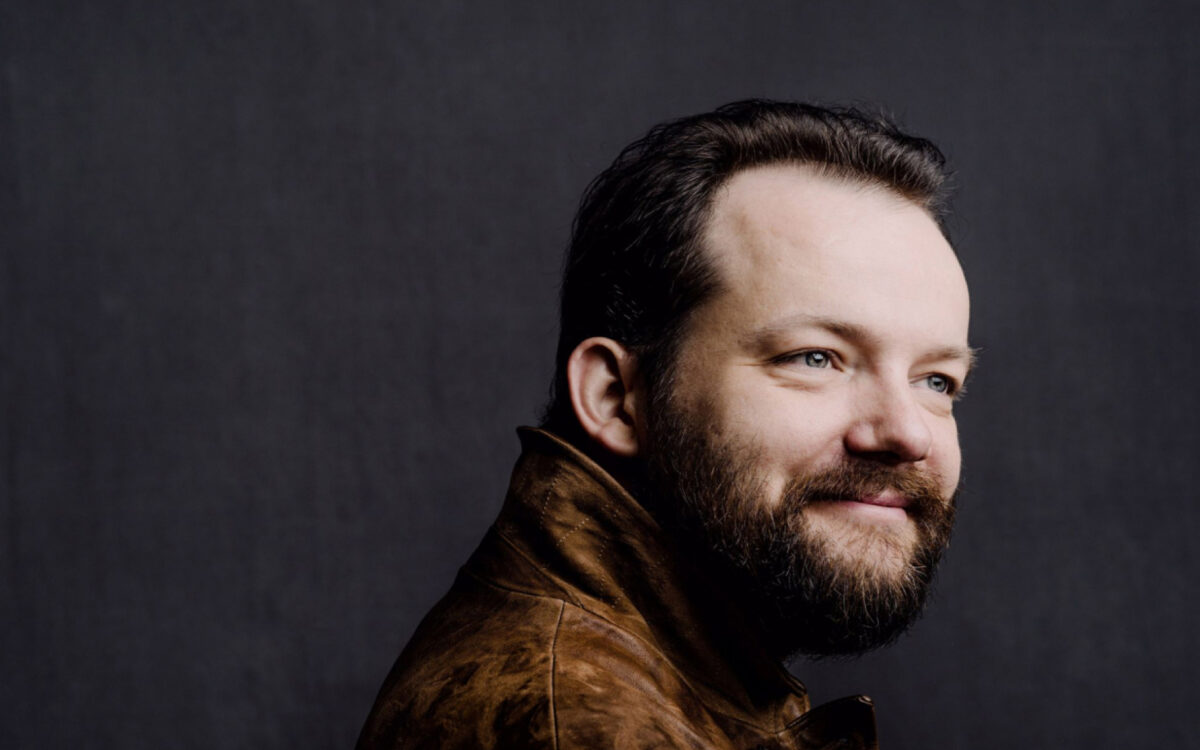Symphony No. 4
Composition and premiere: Except for the finale, which he composed originally as a song with piano accompaniment in February 1892, Mahler wrote his Symphony No. 4 between June 1899 and April 1901. The composer led the first performance on November 25, 1901, with the Kaim Orchestra of Munich; the soprano was Margarete Michalek. He continued to tinker with the orchestration, making final revisions after the last performances he conducted with the New York Philharmonic in January 1911. First BSO performance: Third and fourt movement only on January 30, 1942, Richard Burgin conducting and Cleora Wood, soprano; first complete performance on March 23, 1945, again with Burgin and with mezzo-soprano Mona Paulee. First Tanglewood performance: Again the third and fourth movements only, July 16, 1948, Burgin leading the Tanglewood Music Center Orchestra. The first complete performance was August 15, 1953, with the TMCO led by Robert Mandell and soprano Anne English.
Mahler thought of the Fourth Symphony as a work whose transparency, relative brevity, and nonaggressive stance might win him new friends. Instead, it enraged most of its first hearers; and the very qualities Mahler had banked on were the ones that annoyed. The bells, real and imitated (in flutes), with which the music begins! And that chawbacon tune in the violins! What in heaven’s name was the composer of the Resurrection Symphony (his No. 2) up to with this newfound naiveté? Most of the answers proposed at the time were politicized, anti-Semitic, ugly. Today we perceive more clearly that what he was up to was writing a Mahler symphony, uncharacteristic only in its all but exclusive involvement with the sunny end of the expressive range. Throughout, ideas lead to many different conclusions, and can be ordered in so many ways. Mahler plays with his orchestra as though with a kaleidoscope (note that trombones and tuba are absent); the thread of discourse passes rapidly, wittily from instrument to instrument, section to section. He thinks polyphonically, but enjoys the combining of textures and colors as much as the combining of themes.
He could think of the most wonderful titles for the movements of this symphony, he wrote to a friend, but he refused “to betray them to the rabble of critics and listeners” who would subject them to “their banal misunderstandings.” But we do have his name for the second-movement scherzo: “Freund Hein spielt auf”—“Death Strikes Up.” (“Freund Hein,” which could be rendered literally as “Friend Hal,” is a fairy-tale bogy whose name is most often a euphemism for Death.) Alma Mahler amplified that hint by writing that here “the composer was under the spell of the self-portrait by Arnold Böcklin, in which Death fiddles into the painter’s ear while the latter sits entranced.” Death’s fiddle is tuned a whole tone high to make it harsher—the player also being instructed to make it sound like a country instrument and to enter “very aggressively.” Twice Mahler tempers these grotesqueries with a gentle Trio.
The Adagio, which Mahler thought his finest slow movement, is a set of softly and gradually unfolding variations, rich in seductive melody. The variations, twice interrupted by a leanly scored lament in the minor mode, become shorter, more diverse in character, more given to abrupt changes of outlook. They are also pulled more and more in the direction of E major, a key that dramatically asserts itself at the end of the movement in a blaze of sounds. Working miracles in harmony, pacing, and orchestral fabric, Mahler brings us back to serene quiet on the very threshold of the original G major, but when the finale almost imperceptibly emerges, it is in E. Our entry into this region has been prepared, but it is well that the music sounds new, for Mahler means us to understand that now we are in heaven.
On February 6, 1892, Mahler had finished a song he called Das himmlische Leben (“Life in Heaven”), one of five Humoresques on texts from the collection of German folk poetry known as Des Knaben Wunderhorn (“The Boy’s Magic Horn”). A number of composers went to the Wunderhorn for texts, none more often or more fruitfully than Mahler, who began writing Wunderhorn songs immediately after completing the First Symphony in 1888 (having already borrowed a Wunderhorn poem as the foundation of the first of his Wayfarer Songs of 1884-85). Until about a year before completing his Third Symphony—whose fifth movement is the Wunderhorn song, Es sungen drei Engel (“Three Angels Sang”)—Mahler meant to end it with Das himmlische Leben, the song we now know as the finale of the Fourth. The music of this finale, though gloriously inventive in detail, is of utmost cleanness and simplicity. The solemn and archaic chords first heard at “Sanct Peter in Himmel sieht zu” (“Saint Peter in heaven looks on”), associated here with details about the domestic arrangements in this mystical, sweetly scurrile picture of heaven, belong in the Third Symphony with the bitter self-castigation at having transgressed the Ten Commandments and with the plea to God for forgiveness. Whether you are listening to the Fourth and remembering the Third, or the other way around, the reference is touching, and reminds us, as well, how much all of Mahler’s work is one work.
MICHAEL STEINBERG
Michael Steinberg was program annotator of the Boston Symphony Orchestra from 1976 to 1979, and after that of the San Francisco Symphony and New York Philharmonic. Oxford University Press has published three compilations of his program notes, devoted to symphonies, concertos, and the great works for chorus and orchestra.


